Rrishi Raote and Priyanka Sharma
Good cities have good public transport systems. The easier it is to move around, without a car, the more mobile its citizens become, the more willing to look farther afield for opportunities for work and pleasure.
More open also means less insular and less judgmental. Until a few years ago, by any such measure, Delhi was a very bad city indeed.
Its state-run and private buses were overcrowded, ill-kept and uncomfortable, and then there were the user-unfriendly autos and black-and-yellow taxis. Whatever you chose, it was a forgettable experience. Women suffered the most.
Fisticuffs inside buses were common.
...
How Metro is changing Delhi's image
Image: Delhiites have a Metro, air-conditioned low-floor buses and radio cabs just a phone call away.Now, Delhiites have a Metro, air-conditioned low-floor buses and radio cabs just a phone call away.
If citizens change their way of travelling, do they change their way of living?
In this city, to answer that question one has to begin with its women commuters. Take 21-year-old Sakshi Malhotra, a student of fashion technology, travelling in the Metro mid-morning.
She is dressed in shorts and high heels. This is not what she was wearing when she left home. She used the washrooms at Rajiv Chowk station, she says, to change out of her mother-approved clothes.
Standing in the women's compartment, she does not feel self-conscious in three-inch heels.
...
How Metro is changing Delhi's image
Image: Almost a third of women find public transport most unsafe public space.From next door men struggle to peep in, but Malhotra is unworried. "If people have to look, let them," she says.
"I don't feel scared since there are so many women around me." And it is true - women in the ladies' compartments are fierce in defence of their space.
A survey by women's NGO Jagori, published last year, found that almost a third of the women identified public transport as the most unsafe public space. (Waiting for transport added 10 per cent, and walking down the road 40 per cent.)
So, despite her confidence and the compartment for women, Malhotra does not travel later than 9 pm: "My parents will not allow it."
...
How Metro is changing Delhi's image
Image: Older women prefer Metro.Other female Metro-goers concur; some have uncomfortable experiences of verbal harassment and "staring" in the late trains to relate. The women's compartments go almost empty after 10 pm or so.
Keeping the sexes apart is one thing; another is the predictability of the environment, from escalators to well-laid platforms and trains one doesn't have to climb up or down into.
"I can wear heels. And saris." says more than one regular - whether or not she is actually wearing either. The expression is of relief and enablement. Older women who do not drive can still go out.
Sheila Devi, 60, does not often leave home, but when she does she prefers the Metro to autos and taxis.
"It is cheaper, faster and there's AC of course," she says, shifting her baby granddaughter to the other hip, her eye firmly on her three bags.
...
How Metro is changing Delhi's image
Image: Air-conditioning is a universal incentive.Air-conditioning is a universal incentive. Anmol Mehta, 32, used to travel in buses from Vasant Kunj to his workplace in Kalkaji.
No longer. Though he pays extra to ride a feeder bus to the nearest Metro station, in the train he's happy to be away from other people's sweat.
"With the AC on there's no smell," he says (though rush-hour commuters on hot days will not all agree).
"I hate autos," Mehta adds. "I fell sick in winter after an auto ride - I caught pneumonia. The Metro is heated in winter."
Comfortable commutes probably turn into better productivity.
Delhi autos, with their rigged metres and murderous drivers, have caused much damage to commuters' sanity.
...
How Metro is changing Delhi's image
Image: Metro is economical and saves time.The biggest cluster of Delhi University colleges is in North Delhi, and thousands of students make their way there and back every day.
For them the Metro is economical and a time-saver.
No more horror stories of two hours and three bus changes. Instead, there is usable time: students Himanshu Malik and Sainyam Arora spend it listening to music, reading, studying or, of course, on the phone.
School student Simarjeet Kaur, in her blue-checked uniform, is on her way back home from Mata Gujri Public School.
"My school doesn't provide a bus to my house," she says, "so I take the Metro."
Even wealthy parents now let their children, girls too, travel on the Metro to visit a friend or watch a movie. The family car and driver will take them to and from the station.
...
How Metro is changing Delhi's image
Image: Metro has made life easier for commuters in Delhi.Stations have become meeting places. At Kashmiri Gate and Rajiv Chowk Metro stations (both on the student-frequented line) there are shopping areas with bookshops and food chains like McDonald's and Cafe Coffee Day.
At Rajiv Chowk several groups of young people are sitting on the stairs and chatting.
"We're waiting to catch a Metro that isn't overcrowded," says Preeti Parmar, a public relations professional. "Sometimes it's just nice to sit here and catch up with friends."
The tokens and passes allow a passenger to spend up to 140 minutes within the Metro system's "paid area".
With a car at home, R K Gupta, 70, and his wife still prefer to take the Metro every Sunday from Uttam Nagar to Chhattarpur to visit their daughter.
...
How Metro is changing Delhi's image
Image: Metro is trying to shape passenger behaviour."The way petrol prices are rising," he says, "I would never use the car unless I have no choice."
His wife interjects, "What about the negative part? People in Delhi have no manners. They never give seats to senior citizens."
Delhi Metro Rail Corporation is trying to shape passenger behaviour. There are announcements on the public address system and admonitory posters on the walls.
There are injunctions against sitting on the floor, playing loud music, spitting and eating in the trains. "...
How Metro is changing Delhi's image
Image: Around 1.7 million commuters use Delhi's Metro daily.Some commuters are offended that such statements need to be made here, unlike in any other Metro system in the world - but Madhabi Rai, 35, who rides to Gurgaon to work, says that "some women never heed announcements about not eating in the compartment and not sitting on the floor. I've tried reminding some, only to be subject to barbs and sarcastic remarks."
Pushing and shoving for seats at the busier stations is common. DMRC claims "a great deal of change" in commuter behaviour.
Of its 1.7 million commuters a day only 30-40 people are penalised, for offences like entering the women's compartment, spitting or other "nuisance".
Another common announcement is: "...
How Metro is changing Delhi's image
Image: Some say the Metro has made commuting anti-social and individualised.Sophea Lerner, an Australian sonic media artist and researcher who has lived in Delhi for five years, says it shows how much more "anti-social and individualised" the Metro has made commuting.
In a lecture earlier this year she said: "Over the last four years, there has been a massive increase in the number of people using headphones on the Delhi Metro. [This] constitutes a powerful withdrawal from the shared social space. [There is] a withdrawal into private consumption which is being encouraged here."
Perhaps this is exactly what people want after a long day in the office (the AC bus fare, at Rs 10-25, is 50-66 per cent higher than non-AC and will exclude most manual workers).
...
How Metro is changing Delhi's image
Image: Metro has women-only compartments.For the red AC buses there is both fondness and exasperation. One woman who until recently travelled between ITO and Ashram calls her bus "my Red Riding Hood"; another declares it is quiet enough in the AC bus to speak on the phone.
A man complains that the AC is turned off whenever the bus is overloaded and climbing a flyover, or waiting at a traffic light - "I mean, you're paying 25 bucks, how can you just leave it off?"
Here is a change from "adjusting" to demanding.
Of the 6,198 buses run by Delhi Transport Corporation, 1,280 are AC buses. Ridership is 590 per day per bus, more than in the non-AC buses.
...
How Metro is changing Delhi's image
Image: Metro and radio cabs are more convenient than buses or taxis.This makes a total of about 700,000 riders a day, roughly 15 per cent of DTC's total daily ridership of 4.6-4.8 million. Buses are for the daily commute.
For the occasional airport or train station pickup or dropoff, and for evening outings, Metro and radio cabs are much more convenient for those who can afford them.
Publicist Mary Therese Kurkalang calls upon radio cabs almost every week, usually after a dinner and drinks.
The evening might wrap up at anywhere between 11.30 pm and 2 am, she says, and then it is impossible to find other transport.
"I feel that they're safer," she says, "by the fact that the drivers are more organised, that an office is keeping track of them."
...
How Metro is changing Delhi's image
Image: Metro has made it easier for commuters to travel.When returning to Delhi via the airport, she says, she always books a cab on the Internet from Meru, one of the three big radio cab companies in Delhi.
This is since a "bad experience" a few months ago with an ordinary prepaid taxi where the driver headed "somewhere else" and she had to call the police. For a working woman with a disposable income, the difference is profound.
At night, instead of taking a chance on a regular taxi or asking a friend or colleague with a car to drop her home, she can be independent.
...
How Metro is changing Delhi's image
Image: Many women avoid travelling in Metro at night.There is a night charge on top of the slightly elevated radio cab charge of Rs 10-25 per kilometre (depending on the company), but there is no haggling, there is GPS tracking, the call centre is a phonecall away, and some cabs feature a panic button.
A woman radio station employee in her early 30s who lives on her own says that were it not for radio cabs she would not go out late, would not go to distant parties, and would not be able to wear her party clothes.
Kunal Lalani of Mega Cabs, which operates 890 cabs, estimates about 4,500 radio cabs in the city.
...
How Metro is changing Delhi's image
Image: Metro handles a tiny portion of the total commuters.At least half of them run on the airport circuit, he says. (So much for the one-time Delhi chore of driving friends and relatives to and from airport or railway station.) In five years he expects Delhi to have 15,000-18,000 radio cabs.
Dinesh Mohan, a well-known expert at IIT Delhi's Transportation Research and Injury Prevention Programme, allows that Delhi's newer modes of transport have their uses, but points out that they still fail to move a significant proportion of commuters in comfort and dignity.
The Metro handles a tiny portion of the total estimated 50 million daily trips by Delhiites - most of which are on foot and bicycle.
For those who can use Delhi's premium new modes of transport, however, the world really has changed, and for the better.

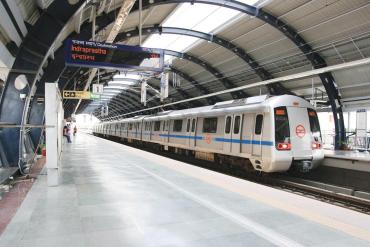
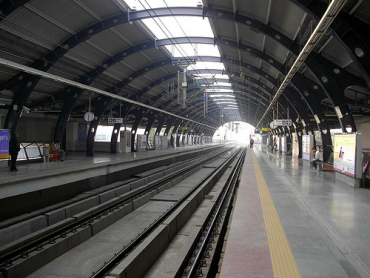
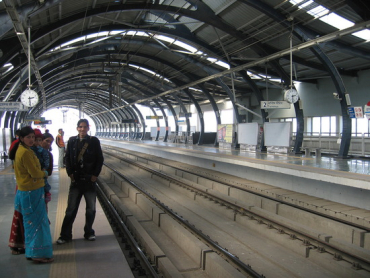
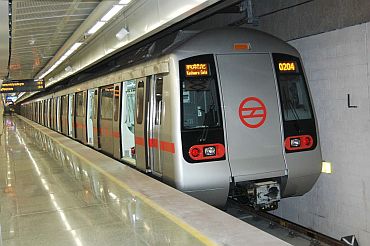
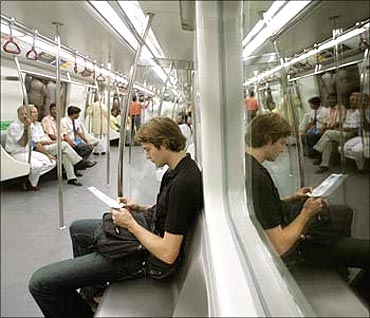
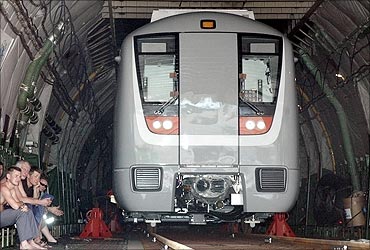

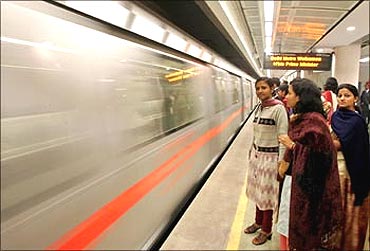
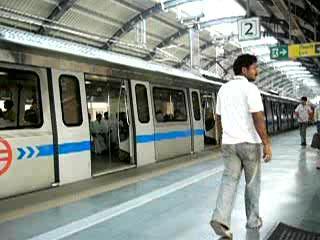
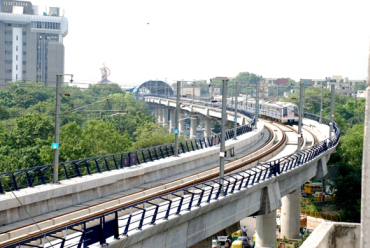

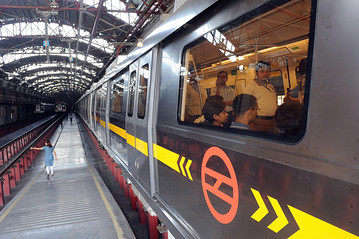
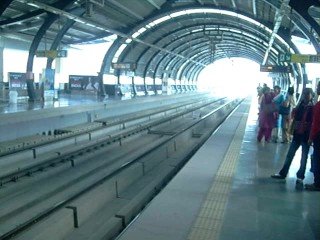
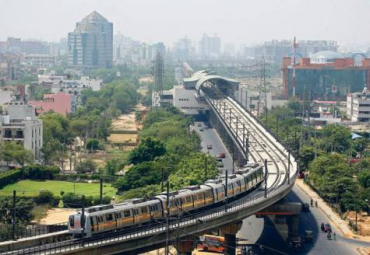
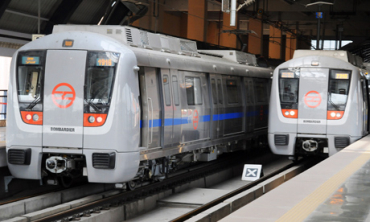

article